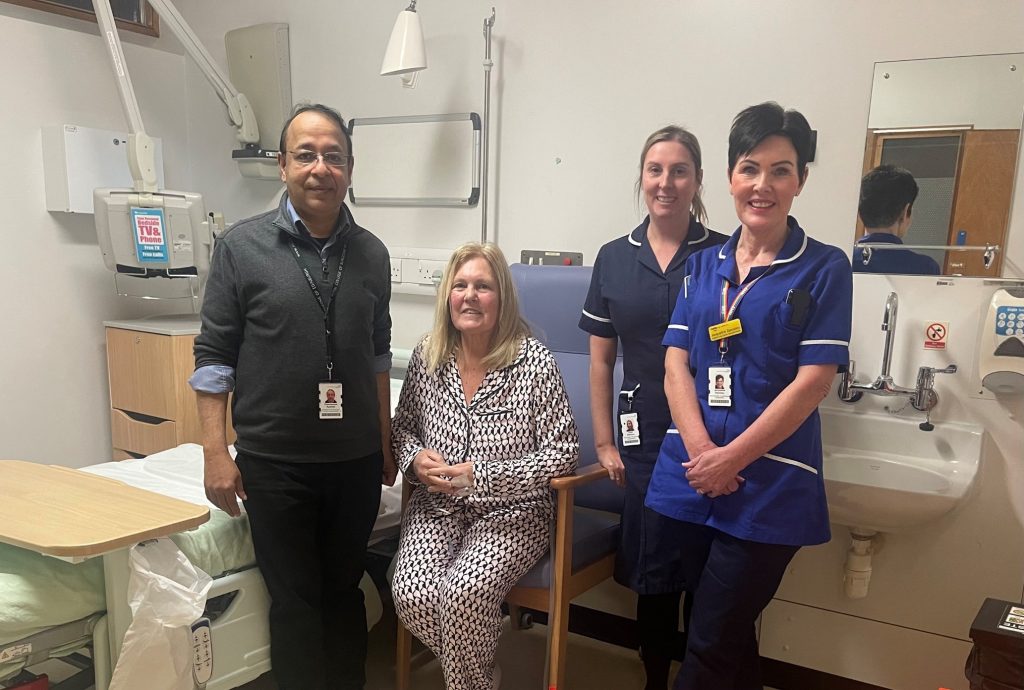Mr Dharmendra Agrawal, thoracic surgery lead at Newcastle’s Freeman Hospital has performed his 300th robotic lung resection using the Da Vinci robotic system.
A lung resection is a type of surgery where a surgeon removes part of the lung to diagnose and treat lung disorders. Traditionally this procedure would be carried out through open thoracotomy or Video assisted keyhole approach, however it can also be performed using robotic-assisted surgery – the technique used by Mr Agrawal.
There are multiple benefits of this technique for patients, including a quicker recovery back to daily activities, reduced pain, and smaller scars. Only a limited number of centres in the country offer regular robotic lung resection surgery and the programme at the Freeman Hospitals is one of the largest in the UK.

Mr Dharmendra Agrawal said, “This pioneering, advanced, minimally invasive surgery requires only three to four small incisions (about 5-8mm). The high-resolution, magnified, three-dimensional view offers greater surgical precision compared to standard minimally invasive procedures.
“This technique has significantly reduced the length of time our patients need to stay in hospital following their surgery and the post-operative recovery is also quicker. On average our patients who have this procedure return to normal activities within two weeks – they also typically have fewer complications.”
The three hundredth patient was Vivienne Greggs, a retired NHS nurse who successfully underwent lung surgery for lung cancer utilising the robotic technique. She made a quick and uneventful recovery and was discharged home only three days after surgery.
Vivienne said: “My recovery has been amazing, so much better than I could have ever imagined”.
In 2013 surgeons at the Freeman Hospital performed UK’s first robotically assisted lobectomy and since then the programme has continued to grow with around 100 cases performed in the last year by robotic team of Mr Agrawal and Mr V Pagliarulo.
Clinical director Dr Kevin Brennan said: “These fantastic achievements have been the result the close teamwork of members of the thoracic surgical team, anaesthetic colleagues and the cardiothoracic theatre staff alongside the other thoracic surgeons involved in robotic thoracic surgery programme Mr Pagliarulo, and Mr Ang.”
Directorate manager Dawn Youssef said: “The entire cardiothoracic surgical team are so proud to reach this major milestone. It is a fantastic achievement and supports the continued delivery of high-quality care for lung cancer patients in our region.”
Lung cancer is third most common cancer in UK and around 50,000 new lung cancer cases are diagnosed every year and lung resection (lobectomy) is gold standard curative treatment for early stage of lung cancer.
In the UK the procedure is mainly performed by Keyhole Surgery (VATS- Video assisted thoracic surgery) and occasionally by open surgery (thoracotomy). In recent years RATS – Robotic assisted thoracic surgery has been used, which is much less invasive than traditional surgery.
Robotic surgery is becoming the standard of care for the surgical treatment of lung cancer and mediastinal lesions. It facilitates the quality of surgery and allows for extensive lung cancer resection with the benefit of small incisions, shorter postoperative recovery times, reduced pain benefits for patients. All these benefits are also enjoyed by the NHS with better utilisation of the limited resources with early patient discharge allowing for an increased throughput of patient treatment.
